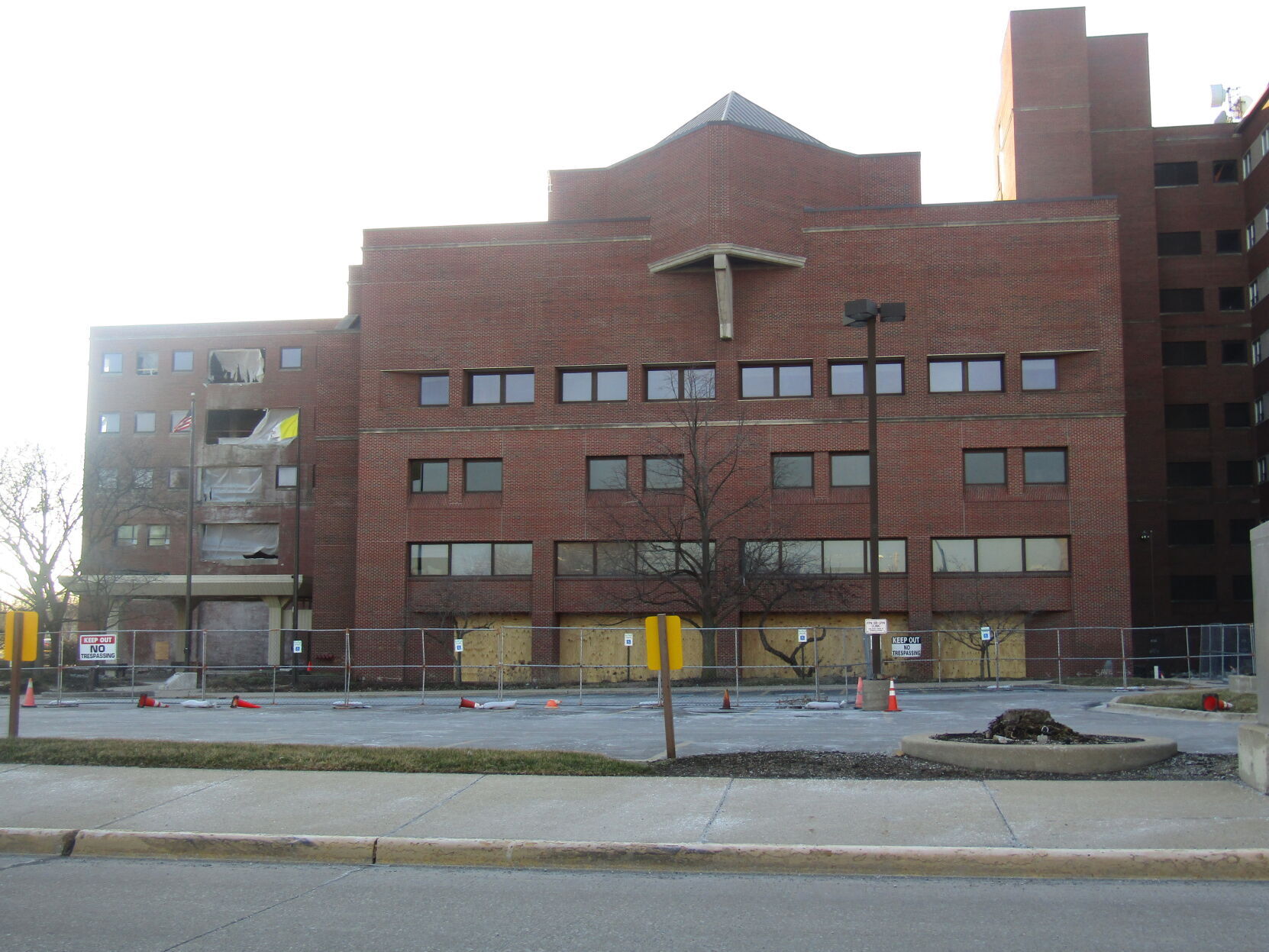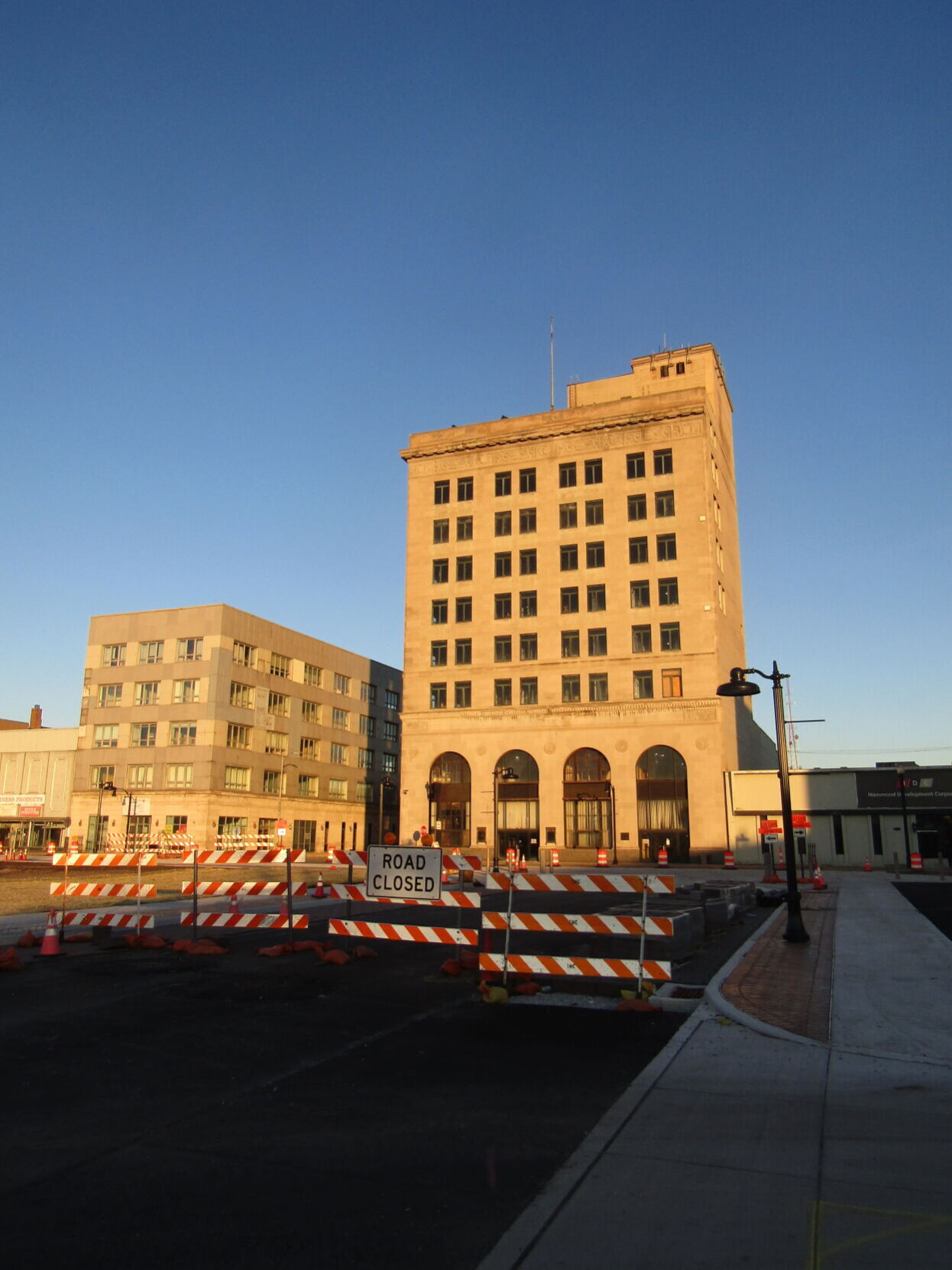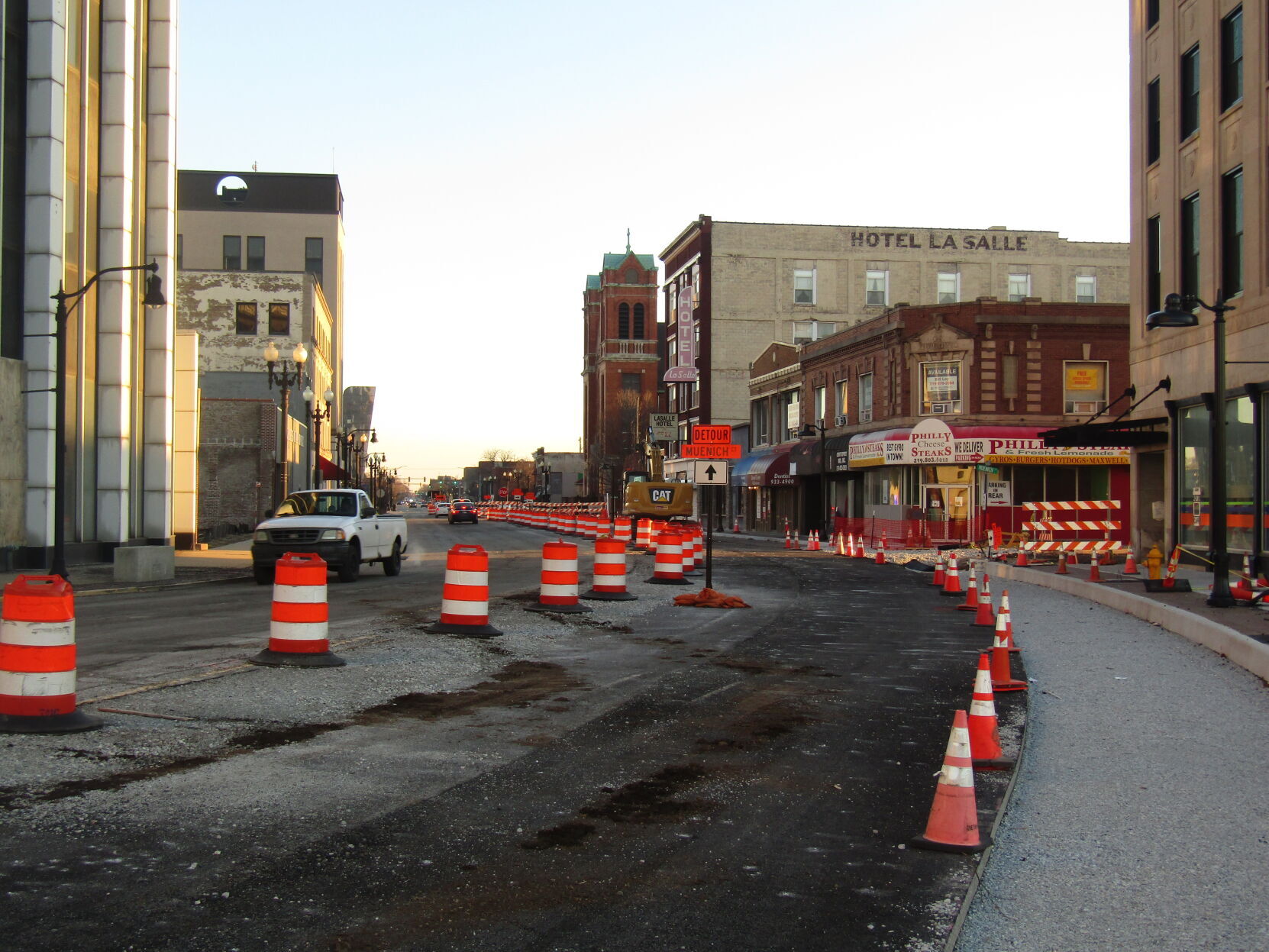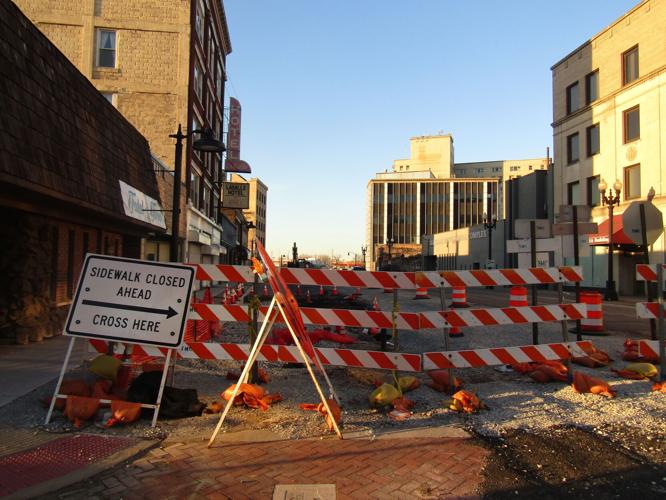HAMMOND — It's been more than a half-century since downtown Hammond was in its prime, a regional destination with grand department stores like Goldblatt's and E.C. Minas and grander movie palaces like the Paramount and Parthenon.
Downtown Hammond evolved into a medical and legal hub that had a lot less foot traffic but where people still went to work every day. Many medical providers clustered around the former St. Margaret's Hospital, and many law offices around the federal and county courthouses.
The last few months have been rough to a downtown where the Region once gathered, even on the cusp of revitalization projects that will bring hundreds of new apartments, a new commuter railroad station and a redesigned streetscape meant to encourage more pedestrian traffic. Downtown Hammond has emptied out with several high-profile departures.
After 120 years, the nine-story Franciscan Health hospital shuttered. Peoples Bank closed its downtown branch, a former office of First Federal Savings and Loan that had had a downtown presence since 1934. The Lakeshore Chamber of Commerce moved from its longtime downtown location to a new office on Indianapolis Boulevard.
Law and accounting offices have left over the last several years after the courts started allowing electronic filing. Lawyers no longer had to physically drop off filings at the court, so they have moved to newer office buildings closer to clients. Some attorneys, for instance, relocated from downtown Hammond to newly built offices in Oxbow Landing just off the Borman Expressway.
More of the historic streetscape vanished last year with the emergency demolitions of the crumbling Hammond National Insurance Co. building and Enslen, Enslen & Matthews building that was badly damaged by arson. Though both empty, each building had been part of the physical fabric of downtown for more than a century, contributing to its historic character.
"It's getting awful barren," American Printing and Advertising owner John Yerga said. "Downtown Hammond's getting pretty deserted."
'Nothing's the same anymore'
St. Margaret Hospital at one point employed more than 1,500 people, according to city records. Many of its employees were regulars at the nearby Potato Express restaurant, owner Dominique Haynes-Travis said.
"Business had absolutely slowed down since the bank and hospital are not there anymore," she said. "We saw a lot of employees, especially nurses and security guards. We had one security guard who came in every Friday and always got the same order that always cost $30. It was awesome to get to know him. We don't see him that often now that the hospital's closed."
The road construction along Hohman Street has left others unsure of whether it's still open or where to park and get inside.
"The impact has been dramatic," she said. "We've lost 50% of our business. It's very fickle now."

Demolition continues at the Franciscan Health Hospital.
Potato Express, which specializes in loaded baked potatoes, has started running more lunch specials and distributing coupons at nearby apartment complexes and the police station.
"It would be nice if everybody in the community would try to help the downtown," she said. "Small businesses are trying to succeed and stay."
She's optimistic about the redevelopment project but is weighing whether the restaurant can afford to stay downtown for the next few years, which she expects to be lean until the new housing is built and filled up. Haynes-Travis said Potato Express received an offer to go to the Southlake Mall, which she's considering.
"It's a pretty big decision," she said. "It may be more profitable to go to Merrillville. We started downtown. It's our baby. We don't want to leave, but they may push us out."
American Printing and Advertising has been a mainstay of downtown since 1983. It originally did business with big banks like Mercantile National Bank, Bank Calumet and Citizens Bank, supplying them with calendars, brochures and other marketing materials.
They're all gone now.
American Printing and Advertising has adapted over the years as technology evolved and downtown Hammond changed around it.
"Nothing's the same anymore," he said. "There were all kinds of little shops around us. We're still here, which took perseverance and hard work. Customer service and quality kept us in business."
'Good things on the horizon'
American Printing and Advertising, which also has a location in Munster, bought up other companies over the years and still has an industrial base, serving customers like the BP Whiting Refinery and Ford's Chicago Assembly Plant.
Yerga's lately offered more discounts and specials to try to attract new business and is hopeful about downtown in the long run, having faith in the city's revitalization plans.
"They're looking at bringing in different types of restaurants and gift shops," he said. "That train is really going to help. There's a real upside, from what I understand."
And downtown still has many anchors, including 18th Street Brewery and Distillery, the Hammond Academy of Science and Technology, Strack & Van Til supermarket, the federal courthouse and the First Baptist Church.
Downtown Hammond's assets are spread out more than those in compact, walkable downtowns like Whiting's or Crown Point's, said Karen Maravilla, owner of It's Just Serendipity and president of the Downtown Hammond Council.

The Bank Calumet building in downtown Hammond is getting redeveloped into apartments.
"We have big buildings that are more spread out," she said. "We have wonderful things like the brewery, Eat and Paul Henry's Art Gallery, but they're not all nestled right next door to each other. People don't always connect the dots."
But redevelopment projects like the effort to turn Bank Calumet into apartments will help, Maravilla said.
"Downtown has gone through a lot of changes," she said. "But things look much brighter. There are good things on the horizon."
Getting by
Maravilla and her partner, Raymundo Garcia, plan to open Eat, now used just for special events, for regular hours on Fridays, Saturdays and Sundays once the 300 new housing units are built downtown.
But it will be tough to get by in the interim, she said.
"There's a domino or ripple effect from these closings," she said. "Hopefully, (remaining) companies have enough wherewithal to stay until these developments bring more people. Downtown Hammond is not what it was, but that's true of many cities. The one thing that's constant is change. That makes room for other things."
Even before construction and recent closures, the downtown was struggling with some of the larger office buildings being vacant, Paul Henry's Art Gallery owner Dave Mueller said.
"There are a bunch of places that have been empty for a while now," he said. "Hopefully, that will turn around when this new development comes, but that will be a while. We'll have to do the best we can in the meantime."
And the downtown still has life, Mueller said. Paul Henry's hosted a jazz concert while the Towle Theatre across the alley had a play and the nearby Eat had a band playing.
"You had three things going on and drawing people on the same night," he said. "It was pretty cool. We've been waiting a while for that to happen, but it finally did."
Mueller said there have been times he's considered closing.
"But now, I'm very optimistic. We've been there for 50 years and watched it go down and down and down, and now we're finally seeing some changes. It's coming back the other way. It's very encouraging to see lights in the Bank Calumet building. That is great."
Supporting a new nucleus
The Lakeshore Chamber of Commerce long operated in downtown Hammond but recently moved from 5246 Hohman Ave. to 7120 Indianapolis Boulevard. The street construction made it difficult for customers to get in and out of the building so the chamber seized an opportunity to move, but it would not be averse to boomeranging back to downtown in the future, Executive Director Dave Ryan said.
The downtown has suffered departure of professional offices as lawyers left older buildings to occupy new Class A office space elsewhere.
"But things are on the upswing," Ryan said. "The new housing and the West Lake Corridor extension will form a nucleus that will redevelop the area."
The new train station will make it more attractive to commuters to Chicago, which could make it more attractive for business investment.

Many of the large buildings in downtown Hammond have emptied out over the years.
"It's not going to go back to a retail mecca with theaters and department stores downtown. It's more of a service area," he said. "It all fluctuates over the years, but the housing could be a very good opportunity. The charter school can expand its campus. Hopefully, the hospital area is cleared out for private development. The downtown's getting 300 new housing units and $50 million in investment."
The new train station on the South Shore Line's extension south to Dyer also will help reimagine the downtown after years of decline, Ryan said.
"It will be a stimulus for new restaurants, new theaters, maybe some pharmacies and the reintroduction of banks," he said. "There will be more opportunity there once again when some of the projects come."
People will have to support downtown businesses for the revitalization project to work, Maravilla said.
"I always think about it like 'It's a Wonderful Life.' When someone closes, they leave a big hole and there's an impact. That's why I always encourage people to spend money at businesses in the area. Those are the businesses that would donate to your kid's sports team or when someone had cancer. They're the ones who fundraise or volunteer. If you go to Vistaprint online instead of American Printing, you're taking away from something local. It's not just hurting a brick-and-mortar business. It's robbing the community."



Post a Comment